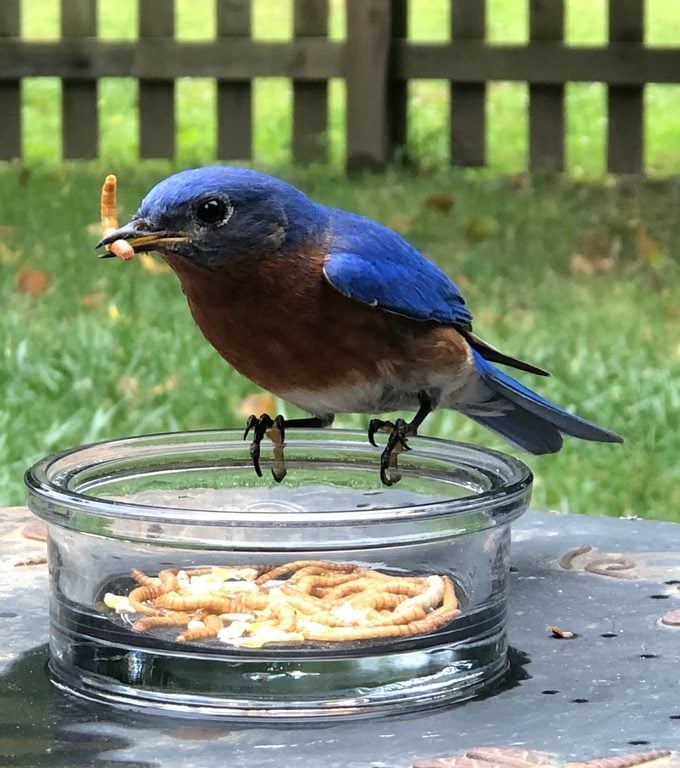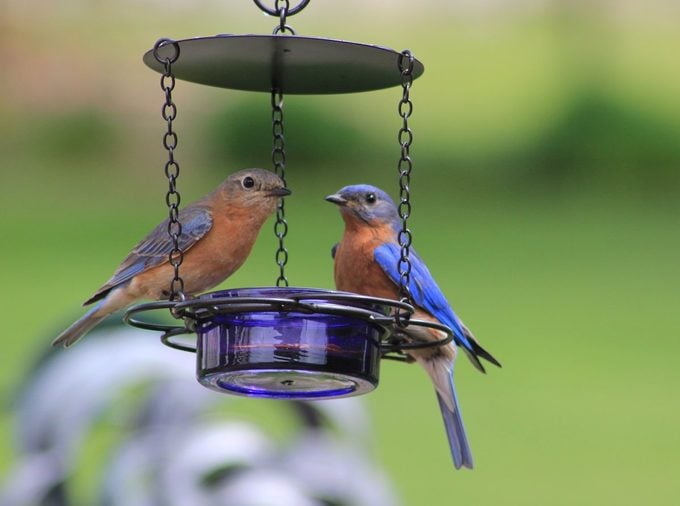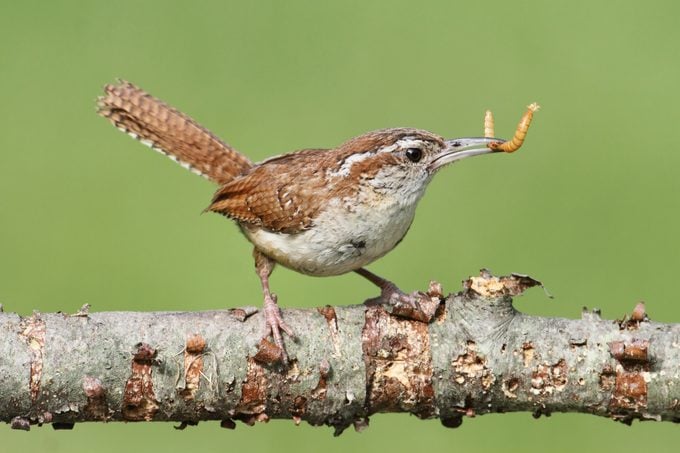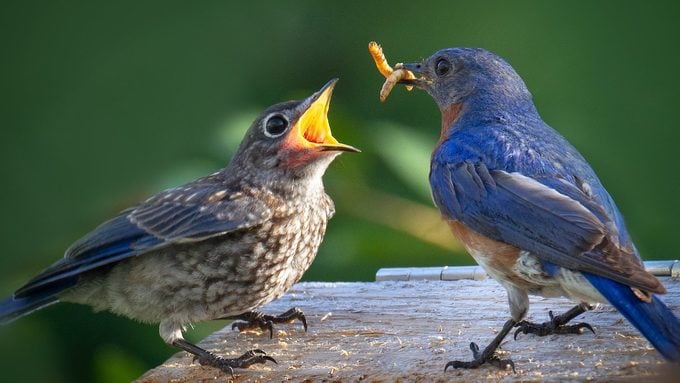Your Guide to Feeding Mealworms to Birds
Updated: Mar. 15, 2024
A mealworm feeder is beloved by bug-eating birds. Learn what birds eat mealworms and get tips for serving live or dried mealworms for birds.
Our editors and experts handpick every product we feature. We may earn a commission from your purchases.
A backyard feeder full of nutritious mealworms is beloved by bug-eating birds—and a guaranteed way to spice up your bird feeding routine. Bluebirds especially love mealworms.
Mealworms are often mistaken for worms, though they’re actually the larval form of the mealworm beetle. They are clean, easy to work with, an excellent source of nutrients, and an aid to birds through cold winter weather and spring reproduction.
“The connection that is created between people and nature from feeding birds—that is indisputable,” said Emma Greig, the project leader of Project FeederWatch, a winter-long survey of feeder birds. Emma offers these easy tips to increase your chances of enticing new species.
Learn more ways how to attract bluebirds.
On This Page
Live or Dried Mealworms for Birds?

You decide. There are pros and cons to each method. Live mealworms are most appealing to birds, though they come at a price and require work to maintain. Dried mealworms are low-cost and convenient, yet may not be as effective at catching birds’ eyes.
“I have tried every method I can think of to feed dried mealworms to the bluebirds. What could I possibly be doing wrong?” asks Gloria Kirby of Owasso, Oklahoma.
Birding experts Kenn and Kimberly Kaufman say, “During seasons when natural food sources are abundant, many birds are less likely to take advantage of our offerings. You might try briefly offering live mealworms to garner their attention, then switch back to the dried worms once they know the drill. Another trick that can make dried worms more appealing is to soak them in lukewarm water before you put them out.”

We asked readers to share their preference when setting out this classic songbird treat:
- “We obtain both dried and live mealworms. Occasionally we add live ones to a dish along with the oatmeal they are packaged with. The birds hunt for the worms underneath the oatmeal,” says Birds & Blooms reader John Zapata of Spring, Texas.
- “Dried mealworms are easier than live ones and more economical,” says Jennifer Kurdelski of Fayetteville, Georgia.
- “I have several mealworm feeders. I used dried worms because they hold up better in the heat of summer and the bitter cold of winter. Look for mealworms at a farm store—they are cheaper!” says Valerie Kirkham of New Carlisle, Indiana.
- “I put dried mealworms in a hanging platform feeder. Bluebirds, woodpeckers, wrens and titmice enjoy them,” says Kay LeRoux of Homosassa, Florida.
What Birds Eat Mealworms?

- Bluebirds
- Chickadees
- Thrushes
- Titmice
- Wrens
- Nuthatches
- Kinglets
How to Store Mealworms Safely
Once you buy a live batch, place them in a shallow plastic container with a 2- to 5-gallon capacity. Cover with a screen or perforated lid for air circulation. Toss in a few apples for moisture, some loose bran and oatmeal. Mealworms are only as nutritious as the food they eat, so feed the larvae well for one to two days before sharing them with birds. Place the container in the refrigerator to slow their growth, and keep them in the larval form that birds love.
Follow these tips on how to feed birds all year long.
How to Offer Mealworms in Bird Feeders

Rather than scattering mealworms on the ground, place them on a platform feeder or rimmed dish to keep them contained. That way, you’re less likely to have the mischievous mealworms crawl away to safety. The feeders should be located near vegetation and away from windows.
It’s important to note that mealworms do not provide complete nutrition and should be used only as a supplemental food source, offered on a limited basis. Overfeeding can cause health issues for adults and young!”
Check out the best bluebird feeders and feeding tips.
Serving Size of Mealworms for Birds
Expect to go through about 100 mealworms per day once birds know where to find them. It’s also important to note that mealworms do not provide complete nutrition and should only be used as a supplemental food source, offered on a limited basis. Overfeeding can cause health issues for adults and young!
Learn about bluebird nests and eggs.
Cheap Ways to Serve Mealworms
There are multiple ways to cut costs and make mealworm feeding manageable. Consider making your own feeder or simply recycle old kitchen pans or dishes. For long-term savings, buy live larvae in bulk from local or online bird food suppliers. Or raise them yourself for a perpetual source.
“If folks have the patience for it, I think it’s probably a great way to maintain a nice collection of healthy, nutritious mealworms,” Emma said. Look for easy-to-follow guides online.
Next, learn how to make a DIY bluebird house.
About the Expert
Emma Greig is the project leader of Project FeederWatch for The Cornell Lab of Ornithology. She is an expert in behavioral ecology.
